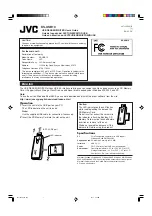
29
PEB383 User Manual
July 25, 2011
Integrated Device Technology, Inc.
Confidential - NDA Required
4. Addressing
Topics discussed include the following:
•
•
•
•
•
•
•
•
4.1
Overview
This chapter discusses the various types of address decoding performed by the PEB383 when it
forwards transactions upstream and downstream. The memory and I/O address ranges are defined
using a set of base and limit registers in the bridge’s configuration header. The base and limit address
registers define the address ranges that a bridge forwards downstream transactions. These registers are
effectively inversely decoded to determine the address ranges on the PCI Interface for transactions that
are forwarded upstream to the PCIe Interface.
4.2
Memory-mapped I/O Space
Memory transactions are forwarded across the PEB383 when their address falls within a window
defined by one of the following registers:
•
“PCI Memory Base and Limit Register”
•
“PCI PFM Base and Limit Register”
The memory-mapped I/O address spacing maps memory address ranges of devices that are not
prefetchable. For PCI to PCIe reads, prefetching occurs in this space only if the Memory Read Line or
Memory Read Multiple commands are issued on the PCI bus. When either of these commands is used,
the quantity of data prefetched is determined by the prefetching algorithm defined in
. For PCIe-to-PCI, the number of bytes to read is determined by the Memory Read Request
TLP.
















































